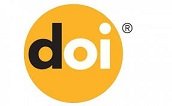Identifying and Verifying Earthquake Engineering Concepts to Create A Knowledge Base in STEM Education: A Modified Delphi Study
1069
385
Abstract
Stakeholders in STEM education have called for integrating engineering content knowledge into STEM-content classrooms. To answer the call, stakeholders in science education announced a new framework, Next Generation Science Standards, which focuses on the integration of science and engineering in K-12 science education. However, research indicates many science teachers, particularly those traditionally prepared to teach within a specific science content domain, need to broaden their knowledge in engineering content areas for successful integration. In this regard, researchers have suggested that new integrated STEM curricula should contain a list of key concepts for understanding the specific engineering content area. Therefore, there is a need for generating key concepts in critical engineering areas enabling science teachers to implement engineering into science classrooms. Using a modified Delphi research design, we identified and verified key concepts in earthquake engineering necessary for high school learners to acquire a basic understanding of earthquake engineering. As a result, we created a key concepts list and strand map with 35 key earthquake-engineering concepts. High school science teachers as well as other teachers in STEM content areas can use these key concepts to understand and teach earthquake engineering content in their classrooms.
Full Text:
PDFRefbacks
- There are currently no refbacks.
Copyright (c) 2017 International Journal of Education in Mathematics, Science and Technology







International Journal of Education in Mathematics, Science and Technology (IJEMST)

This work is licensed under a Creative Commons Attribution-NonCommercial-ShareAlike 4.0 International License.
ISSN: 2147-611X (Online)
